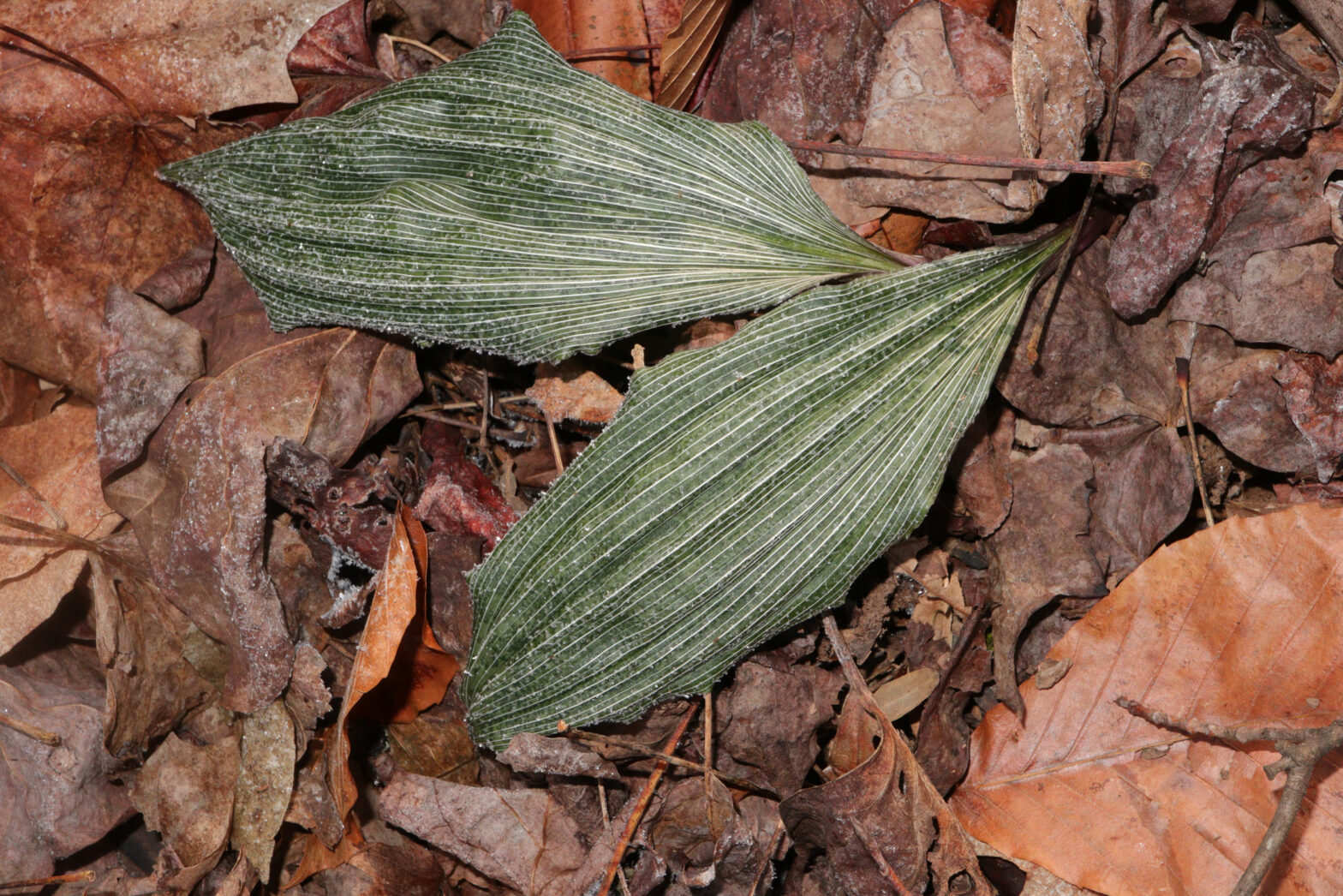For as long as I can remember, expeditions to winter woods set my aunt off in a frenzied search for puttyroot. I was always vaguely disappointed that we only found leaves. Despite years of shared walks, we never saw the flowers together. This incessant search continued well into her 80s. She and my uncle moved near me for four years and I joined them on weekly walks. In addition to enjoying many other flowers and creatures, we rediscovered the leaves I remembered from my childhood.
As other plants shed their foliage, puttyroot leaves emerge here in October or early November. Once the shady canopy of leaves is gone it is their cue to send up a single leaf from each plant, to catch the light and gather energy to flower the following spring. The seersucker green and white puckered leaves seem to come up suddenly, and then settle in and become a part of the autumn and winter landscape.
Scientific research shows these leaves can photosynthesize at much lower temperatures than most plants, active nearly to freezing. Because of this, they continue to manufacture food intermittently through winter. This week they still seemed very fresh even covered with ice crystals.
In late winter or early spring, most wildflowers complete their rushed lives before shade can block the sun. When the forest leafs out in spring and the tall trees cast deep shadows, puttyroot’s flowering stalks emerge from the bare earth where their leaves have either faded or totally disappeared. Soon after, they open their small but elegant greenish yellow flowers accented with touches of purple. A close inspection of the intricate details reveals the affinities of this native orchid with their showier florist counterparts. Whether in leaf or flower, they have an understated elegance. They are easy to miss in the dappled May woods, but always worth taking the time to stop and admire.
